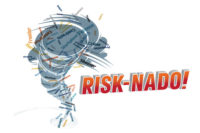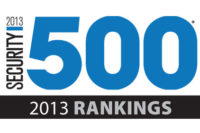Bijan Karimi: Bringing Order to Chaos
“We discuss risk as a concept beyond just the financial exposure… From supporting the community’s planned events to planning for the unknown, our job is to both be ready today and to look ahead.”

No one better defines the adage “Find what you love to do and then figure out how to make a living at it” better than Bijan. While he held a successful career in financial services, he also volunteered as a member of the Marin (California) County search and rescue team. Following the events of 9/11, more government funding became available to help local jurisdictions prepare for, respond to and recover from disasters. This additional funding for emergency management created an opportunity for Bijan to take his business experience, knowledge of incident management and move full-time into a field that was maturing. Today, he serves as the Assistant Deputy Directory for the Department of Emergency Management in San Francisco and has written a paper, “Strategic Planning for Emergency Managers.”
“Applying my business skills and emergency management experience to disaster planning has helped me succeed. I enjoy working with so many different agencies and managing the complex interactions. In the financial sector and especially in emergency management, I like bringing order to chaos.” And that order provides resilience to the many people who live and work in San Francisco.
San Francisco encompasses 47 square miles and is home to over 825,000 residents in the evening and more than 1.2 million during the work day. Bijan is part of the department’s senior management team and leads hazard and threat analysis while overseeing emergency planning, training and exercise planning, operations, special event planning and grants management. Prior to working in San Francisco, Bijan oversaw the Marin County Sheriff’s Office of Emergency Services.
While one eye is always on a possible earthquake, as Securitygoes to press, the Rim Fire in Tuolumne (California) County was threatening the Hetch Hetchy Reservoir which supplies 85 percent of San Francisco’s water; fortunately, water has continued to flow to all customers. On other days the department coordinates the city’s support to large public events including the SF Pride Parade that draws more than 500,000 participants. Where it gets particular challenging is when 150 Amgen Bike Tour cyclists leave the city and ride over the Golden Gate Bridge while 850 people are in the water for the Alcatraz SharkFest Swim (really) and 44,000 runners are going from one side of the city to the other during the annual Bay to Breakers race all at the same time.
“The fascinating aspect is looking at critical risks that might arise today or in 50 years. We discuss risk as a concept beyond just the financial exposure. We look at emergency management holistically with a strong focus on risk management. What capabilities do we have and which do we need to improve to mitigate threats and hazards? How do we identify and eliminate our vulnerabilities? From supporting the community’s planned events to preparing for the unknown, our job is to both be ready today and to look ahead.”
“The department avoids fear messaging and focuses on survival to be successful. By being prepared, we remove fear of the unknown and improve resiliency. When we talk to people and share that survival rates in a typical disaster are more than 99 percent and preparation will increase their own resiliency, we get buy-in and proactive behavior. The community is organized to be resilient during an emergency.”
Another trend is that the younger generation wants to be more involved, self-sufficient and rely less on government. They may realize that law enforcement, 911 and emergency response are likely to be overwhelmed in a crisis and are making the choice to be prepared.
Bringing such diverse and complex participants together is a challenge and requires strong leadership. Bijan is a fan of the book “The Servant Leader” which teaches that personal (and organizational) success comes from managers supporting the people who work for them. If you make it about you, then the organization suffers.
Bijan remarks that it’s necessary to coordinate all of the agencies responsible for the city’s overall security mission, saying, “In effect, we help them see the big picture and how they all need to work together. Of course, we have responsibility to do so but not necessarily the authority to enforce.
“Our contribution to the city, community and private sector partners is planning preparing and creating a conduit and process for emergency management in San Francisco. As Mike Tyson famously said, ‘Everybody has a plan until they get punched in the mouth.’ The process of planning is equally if not more important to the actual plan.”
From the mayor’s office on through, it is vital for leadership to understand how a decision affects risk exposure and security programs. Security has to be in the conversation. If it is left out of decision-making, then bad things can happen. We also work to keep in front of our leaders.
Bijan greatly enjoys the outdoors including biking and trail running. His leadership and participation in search and rescue is both his vocation and hobby, as he is an active member of the Marin County Search and Rescue Team. “I like the connection to the tactical response work, preparing and working with volunteers. And I take pride in developing those who work with me as well as learning from others’ strengths and weaknesses.”
Security Scorecard
- Annual City Budget:$6.8 Billion
- Annual Emergency Management Budget:$2.9 Million
Critical Issues
- Ongoing program funding with decreasing federal grant money
- Staying focused on mission critical tasks
- Maintaining high level of operational readiness
Security Mission
- Cyber
- Enterprise Resilience
- Enterprise Risk Management
- Global Security Operations Center
- Information Technology
- Physical/Asset Protection (Not for Resale)
- Supply Chain/Logistics
Looking for a reprint of this article?
From high-res PDFs to custom plaques, order your copy today!





